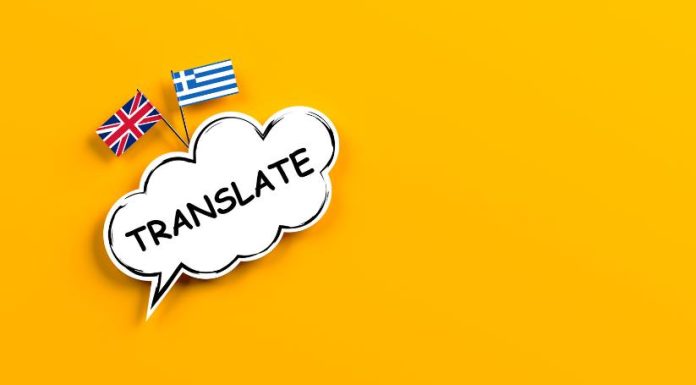Table of Contents
Regardless of your industry or niche, marketing is a must-have for all businesses. The content marketing size has reached $72 billion, while public relations stands at $107 billion. Why are businesses pouring so much money into marketing? Because it delivers results.
Marketing becomes even more critical when you want to penetrate a new market. You’re a European business that wants to set roots in the United Kingdom or a Chinese company starting your second office in Germany.
When going through this shift, marketing translation services are paramount. They ensure that your message is delivered in a way that resonates with your new target audience.

Corporate industry leaders often emphasise the importance of professional translation services and interpreting within the global business environment across practically all sectors. When speaking to expert translators from the world’s top translation providers, such as TS24 Translation Agency, Lionbridge Translations or TransPerfect, we can really understand how much the demand for professional language translations and interpretation services grows yearly. As a result, the world’s largest and fastest-growing companies now consider translation a key service and often incorporate it into their annual budgets, whether working with in-house translators or a translation agency.
If your brand plans to expand its global reach to foreign markets and consequently attract an international audience, keep reading, as you might find this guide really useful. We collaborated with global translation experts to provide you with in-depth tips on using translation to achieve a significant impact.
6 Key Tips to Maximise the Impact of Translations
McKinsey would tell you that ”every business” needs a ”full-funnel marketing strategy.” We agree. Content is an integral part of this strategy. In a world where we’re constantly inundated with information, good content is king.
But what makes marketing content impactful? Ideally, your content should be precise, accurate, relatable, and culturally appropriate. Here are some tips to ensure this in international marketing.
1. Know the Terms

There are a few distinct terms in marketing translation that you should be familiar with. Here are some.
- Translation: Translation is the simplest one. You already know it means converting text from one language to another.
- Localisation: In localisation, you do not stay limited to the text. You incorporate cultural nuances, images, colours, and sensibilities that resonate with a particular area or group of people. For example, you’d use the Imperial system of measurement for the US, but you’d go with the metric system in Germany. Similarly, you would use the target audience’s currency and preferred payment methods in your checkout pages or marketing content.
- Globalisation:Globalisation is an umbrella term that includes translation and localisation. It refers to the process of adapting your business or marketing strategy to fit a global audience.
- Transcreation: When you want to convey the message of the source language with a different approach or wording to make it more culturally relevant and effective, you transcreate. You can call this creative translation. For example, Christmas might not be the holiday season in Muslim countries. So, you transcreate your marketing material with regards to Ramadhan and Eid.
Knowing the differences between these terms can help you choose the right approach for your marketing translation needs.
2. Account for Visuals
Visuals like colours and symbols are a crucial part of your marketing material. It would help if you remembered that they can have different connotations in different countries.
In the West, white is for weddings. Most Asian and African cultures consider it a symbol of mourning.
Similarly, some symbols may be perceived differently in different parts of the world. Examples of such symbols include the swastika, which is a sacred symbol in Hinduism and Buddhism, where it indicates good fortune. But it has negative connotations in Western cultures due to its association with Nazi Germany.
Since you don’t want your marketing material to be offensive to any group, it’s imperative to research and understand the cultural meanings of visuals. Alternatively, you can work with professional marketing translation service providers who are well-versed in cultural nuances. It will save you a lot of time and effort.
3. Use the Right Videos and Pictures
Suppose you’re a British company. You’re now expanding to India. Suppose your marketing material is predominantly of one group of people that do not look like them. What message will it convey to your Indian audience? Would they feel represented? No.

Instead, you must include diverse visuals that cater to the audience you’re trying to reach. For instance, if your marketing material is focused on a South Asian audience, use visuals that reflect the culture and traditions of that region.
4. Incorporate Local Slang
Nothing makes marketing relatable like a pinch of pop culture and local slang. When translating for an audience, keep their colloquial language in mind. It will help you connect with them on a more personal level.
For example, the meme culture in Nigeria is quite popular. If you’re marketing a product in Nigeria, try incorporating popular local memes.
Similarly, add Bollywood references for your Indian audience. Or reference K-Pop for your South Korean audience. These small additions can make a significant impact on how the audience receives your marketing.
5. Understand Gender and Social Norms
Social norms impact language to an extent we don’t usually realise. The language you use in your US advertisement won’t work in a more conservative country like Saudi Arabia.

For instance, there’s a larger acceptance of other communities in some countries compared to other ones. It would be best for your business to research the best approach here.
6. Localise Your Online Content
Your website’s blog is a massive part of the content marketing strategy. However, simply translating the blog posts will not be enough to attract a new audience. You’ll have to localise them completely.
That means:
- Changing the SEO keywords according to local search trends
- Adding links to other local websites and sources related to the topic
- Including references and examples that the local audience can relate to
- Localising the images used in the blog post
- Transcreating any cultural references or jokes that may not make sense in the target audience’s language
- Adding localised customer testimonials or reviews
- Changing the website layout to make room for languages that take up more space or read right to left, such as Arabic or Hebrew
The aforementioned marketing translation tips can make a huge difference in how a target audience perceives your business. But doing all this isn’t always possible without the assistance of marketing translation services.
Professional marketing translation services have helped countless businesses like you before. They know the ins and outs of the industry. Rest assured, you can count on them to help you create a global presence for your brand.


